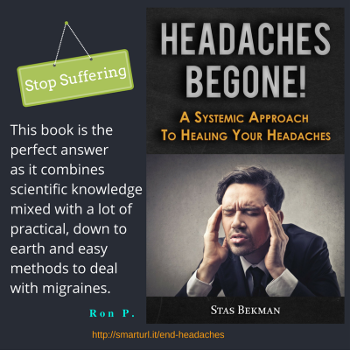Project Megiddo
Project Megiddo
Table of contents |
1. Executive summary2. Introduction3. Christian Identity4. White sumpremacy5. Militias6. Black Hebrew Israelites7. Apocalyptic cults8. The significance of Jerusalem9. Conclusion |
IV. WHITE SUPREMACY
There are a number of white supremacy groups that do not necessarily adhere to Christian Identity or other religious doctrines. White supremacy groups such as the National Alliance, the American Nazi Party and the National Socialist White People’s Party are largely politically, rather than religiously, motivated.
The National Alliance is probably best known for its leader, William Pierce, who is one of the most recognized names in the radical right. Pierce wrote The Turner Diaries and Hunter and hosts a weekly radio program, American Dissident Voices. Via these outlets, Pierce is able to provide his followers with an ideological and practical framework for committing violent acts. The rhetoric of these groups largely shadows that of Adolf Hitler’s in content and political ideology. In 1997, Pierce stated that:
Ultimately we must separate ourselves from the Blacks and other non-whites and keep ourselves separate, no matter what it takes to accomplish this. We must do this not because we hate Blacks, but because we cannot survive if we remain mixed with them. And we cannot survive if we permit the Jews and the traitors among us to remain among us and to repeat their treachery. Eventually we must hunt them down and get rid of them. [22]
The end goal of National Socialist and Christian Identity devotees is the same: an all white nation. However, Christian Identity followers appear to be more of a threat concerning the millennium because of their religious beliefs.
There are also white supremacist groups which adhere to the general supremacist ideology, but are not political or religious in nature. For example, the Ku Klux Klan (KKK) proposes racial segregation that is not generally based on religious ideals. The KKK is one of the most recognized white supremacist groups in the United States. Its history is expansive and its actions of cross burnings and rhetoric of hate are well known. There is currently not a singular KKK group with a hierarchical structure, but many different KKK groups with a common ideology.
The KKK, as a whole, does not pose a significant threat with regard to the millennium. That is not to say that a member of the KKK will not act on his own or in concert with members of another group. Law enforcement has been very successful in infiltrating a number of these groups, thereby keeping abreast of their plans for action. The KKK also draws the attention of many watchdog groups, and the Southern Poverty Law Center produces a quarterly publication entitled “Klanwatch.” It would be difficult for any of the known KKK groups to participate in millennial violence without law enforcement knowing.
Again, there is a great deal of movement that is possible throughout the right-wing, regardless of prior beliefs. If a member of a Christian Identity faction does not feel that his current group is taking enough violent action, it is possible for that member to move on to other ideologies or organizations such as Odinism, the World Church of the Creator (WCOTC) or the National Socialist movement. Because of this movement, it is also likely that communication exists between various factions of the right-wing, from religious groups to skinheads. Their end goals are similar.
The WCOTC presents a recent example of violence perpetrated by a white supremacist in order to bring about a race war. The major creed upon which Ben Klassen founded the religion is that one's race is his religion. Aside from this central belief, its ideology is similar to many Christian Identity groups in the conviction that there is a Jewish conspiracy in control of the federal government, international banking, and the media. They also dictate that RAHOWA, a racial holy war, is destined to ensue to rid the world of Jews and “mud races.” In the early 1990s, there was a dramatic increase in membership due to the growing belief in the Apocalypse and that RAHOWA was imminent.
In 1996, Matt Hale, who has come upon recent fame by being denied a license to practice law in Illinois, was appointed the new leader of the Church of the Creator. Hale made a number of changes to the group, including changing the name of the organization to the World Church of the Creator, giving it the feel of a widespread movement.
As publicly reported, there is information to indicate that the WCOTC has violent plans for the millennium. Officials who searched Benjamin Smith's apartment, the man who went on a racially motivated killing spree over the 4th of July weekend, found a loose-leaf binder of handwritings. These writings described a holy war among the races and included a reference to the new millennium. Passages included plans of how white supremacists would shoot at non-whites from motor vehicles after the dawning of the new millennium. [23] While the group’s rhetoric does include the belief in a race war and the creation of an all white bastion within the United States, other than Smith's writings, there is no indication that it is linked to the millennium.
In addition, there have been recent incidents that have demonstrated the willingness of members to take part in violent action. WCOTC members in Southern Florida are thought to be tied to several racially motivated beatings. Within the last year, four Florida members were convicted for the pistol-whipping and robbery of a Jewish video store owner. They were supposedly trying to raise money for "the revolution." [24]
Odinists dangerous is the fact that many believe in the necessity of becoming martyrs for their cause. For example, Bob Mathews, the leader of The Order, died in a fiery confrontation with law enforcement. Also, William King relished the fact that he would receive the death penalty for his act of dragging James Byrd, Jr. to his death. Odinism has little to do with Christian Identity but there is one key similarity: Odinism provides dualism -- as does Christian Identity -- with regard to the universe being made up of worlds of light (white people) and worlds of dark (non-white people). The most fundamental difference between the two ideologies is that Odinists do not believe in Jesus Christ. However, there are enough similarities between the myths and legends of Odinism and the beliefs of Christian Identity to make a smooth transition from Christian Identity to Odinism for those racist individuals whose penchant for violence is not being satisfied.




